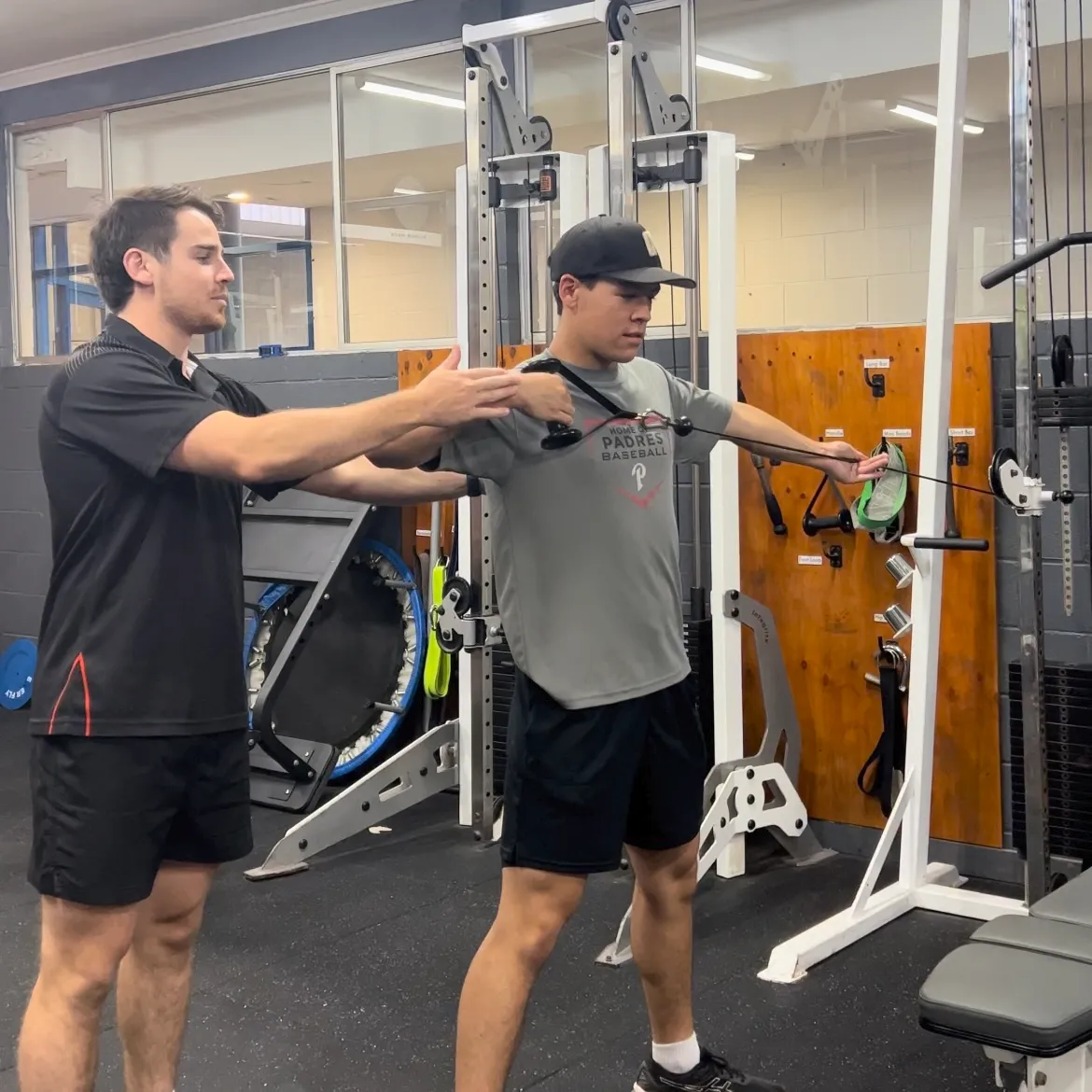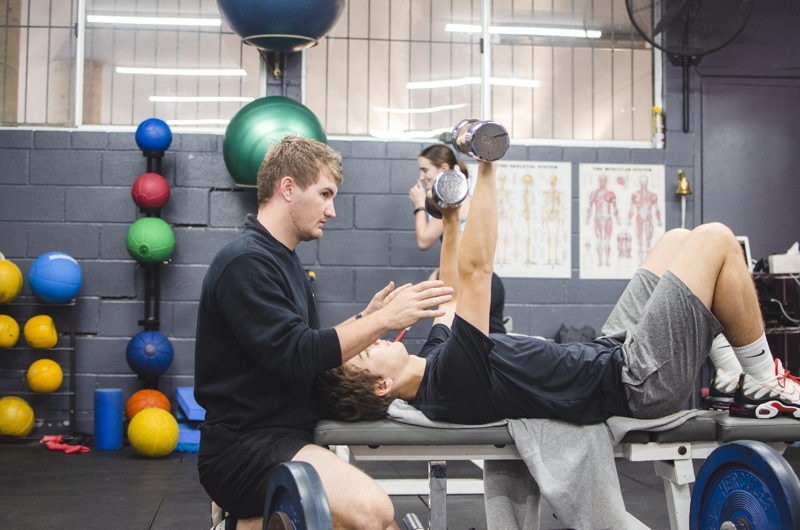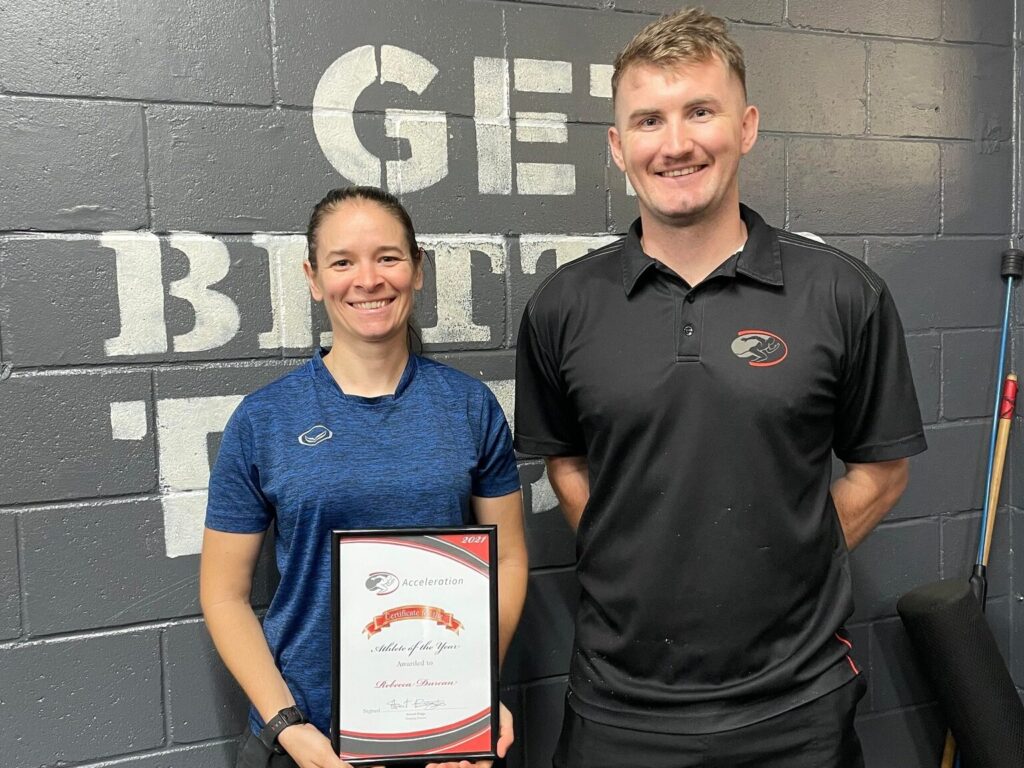Rugby Resistance Training
Rugby Resistance Training That Will Unlock Your Potential

In the world of rugby, where power, speed, and agility reign supreme, resistance training has emerged as a game-changer for athletes looking to elevate their performance. At Acceleration Australia, we understand the immense benefits of incorporating rugby resistance training into your fitness regimen. Our expert coaches, equipped with the latest in sports science and training methodologies, are dedicated to helping you unlock your full potential on the pitch.
Why Resistance Training is Essential for Rugby Players
Resistance training, also known as strength training, is a critical component of any comprehensive rugby training program. By challenging your muscles with external resistance, such as weights, resistance bands, or even your own body weight, you can:
- Increase Muscle Strength: Rugby is a physically demanding sport that requires a high level of strength to tackle, ruck, and scrum effectively. Resistance training helps develop the muscle strength needed to dominate in these key areas of the game.
- Enhance Power Output: Explosive power is essential for breaking through tackles, accelerating quickly, and jumping higher in lineouts. Resistance training, particularly exercises that focus on explosive movements, can significantly improve your power output on the field.
- Improve Injury Resilience: The high-impact nature of rugby puts players at risk of various injuries. Resistance training helps strengthen muscles, tendons, and ligaments, reducing the likelihood of injury and facilitating faster recovery when injuries do occur.
- Boost Endurance: While strength and power are crucial, rugby players also need to maintain high levels of performance throughout an 80-minute match. Resistance training can improve muscular endurance, allowing you to perform at your best for longer periods.
“Resistance training has been a game-changer for my rugby performance. Not only have I noticed significant improvements in my strength and power on the pitch, but I also feel more resilient and able to maintain my intensity throughout the entire match. The expert guidance and personalized programming I received at Acceleration Australia have been instrumental in taking my game to the next level.” – John, Rugby Player
The Acceleration Australia Approach to Rugby Resistance Training
At Acceleration Australia, we take a holistic and scientific approach to rugby resistance training. Our programs are designed to optimize athletic performance while minimizing the risk of injury. Here’s what sets our approach apart:
Individualized Programming
We understand that every athlete is unique, with their own strengths, weaknesses, and goals. That’s why our expert coaches create personalized resistance training programs tailored to your specific needs. By assessing your current fitness level, injury history, and performance goals, we develop a plan that maximizes your potential and aligns with your rugby aspirations.
Periodization Charting
Periodization is a key principle in sports training that involves strategically planning and varying training intensity and volume over time. At Acceleration Australia, we use advanced periodization charting techniques to ensure that your resistance training program is optimized for peak performance when it matters most. By carefully structuring your training cycles, we help you avoid overtraining, minimize injury risk, and arrive at key matches in top form.
Goal Setting and Tracking
Setting clear, achievable goals is essential for staying motivated and measuring progress. Our coaches work closely with you to establish specific, measurable goals for your rugby resistance training journey. We regularly assess your progress and make data-driven adjustments to your program, ensuring that you stay on track and continue to make gains both in the gym and on the pitch.


Key Exercises for Rugby Resistance Training
While every resistance training program should be tailored to the individual athlete, there are certain exercises that are particularly beneficial for rugby players. These exercises target the key muscle groups and movement patterns required for optimal performance on the pitch. Some of these essential exercises include:
- Squats: Squats are a fundamental exercise for developing lower body strength and power. They target the quads, hamstrings, glutes, and core muscles, all of which are crucial for tackling, rucking, and explosive running.
- Deadlifts: Deadlifts are another compound exercise that engages multiple muscle groups, including the back, glutes, and hamstrings. They help develop the strength and stability needed for effective scrummaging and mauling.
- Bench Press: The bench press is a classic upper body exercise that targets the chest, shoulders, and triceps. It’s essential for developing the pushing strength required for fending off tackles and maintaining possession in contact situations.
- Pull-Ups: Pull-ups are an excellent exercise for building upper body pulling strength, which is crucial for tackling, lineout lifting, and overall upper body dominance on the pitch.
- Plyometric Exercises: Plyometric exercises, such as box jumps, bounding, and medicine ball throws, focus on developing explosive power. These exercises train your muscles to generate maximum force in minimal time, translating to more powerful sprints, jumps, and tackles on the field.
Remember, these are just a few examples of the many exercises that can be incorporated into a comprehensive rugby resistance training program. Our expert coaches at Acceleration Australia will work with you to select the most appropriate exercises based on your individual needs and goals.
Integrating Resistance Training into Your Rugby Routine
Effectively integrating resistance training into your overall rugby training routine is crucial for maximizing the benefits and minimizing the risk of overtraining or injury. Here are some key considerations:
Frequency and Timing
The frequency and timing of your resistance training sessions will depend on factors such as your current fitness level, training phase, and match schedule. Generally, 2-3 resistance training sessions per week, with at least one rest day between sessions, is a good starting point. Our coaches will work with you to determine the optimal frequency and timing based on your individual circumstances.
Progressive Overload
Progressive overload is a fundamental principle of resistance training that involves gradually increasing the resistance, volume, or intensity of your workouts over time. This approach ensures that your muscles continue to adapt and grow stronger. At Acceleration Australia, we carefully monitor your progress and make strategic adjustments to your program to ensure consistent gains.
Recovery and Nutrition
Proper recovery and nutrition are essential for maximizing the benefits of rugby resistance training. Adequate rest, hydration, and a balanced diet that includes sufficient protein, carbohydrates, and healthy fats are all crucial for muscle repair and growth. Our coaches provide guidance on effective recovery strategies and nutrition to support your training and performance goals.
Integration with Rugby-Specific Training
Resistance training should be integrated seamlessly with your rugby-specific training, such as skill work, tactical drills, and conditioning sessions. At Acceleration Australia, we work closely with your rugby coaches to ensure that your resistance training program complements and enhances your on-field training, rather than detracting from it.


The Role of Periodization in Rugby Resistance Training
Periodization is a crucial aspect of rugby resistance training that often sets successful programs apart. At its core, periodization involves strategically planning and varying training intensity, volume, and focus over time to optimize performance and minimize injury risk. Here’s a closer look at how periodization is implemented in rugby resistance training at Acceleration Australia:
Macrocycles, Mesocycles, and Microcycles
Periodization is typically structured around three main cycles:
- Macrocycles: These are the longest cycles, usually spanning an entire rugby season or year. Macrocycles are divided into distinct phases, such as off-season, pre-season, in-season, and post-season, each with specific training goals and emphases.
- Mesocycles: Within each macrocycle, there are several mesocycles lasting several weeks to a few months. Mesocycles focus on specific adaptations, such as hypertrophy (muscle growth), strength, power, or endurance, and progress in a logical sequence to build upon one another.
- Microcycles: Microcycles are the shortest training cycles, typically lasting a week. They dictate the specific workouts, exercises, sets, reps, and intensities for each training session within a given mesocycle.
Undulating vs. Linear Periodization
There are two main approaches to periodization in rugby resistance training:
- Linear Periodization: In this model, training progresses in a linear fashion from high volume/low intensity to low volume/high intensity over the course of a macrocycle. For example, a rugby player might start with a hypertrophy phase emphasizing higher reps and moderate weights, then transition to a strength phase with lower reps and heavier weights, and finally to a power phase with explosive, low-rep exercises.
- Undulating Periodization: Also known as non-linear periodization, this approach involves more frequent variations in training volume and intensity within a given mesocycle or microcycle. For instance, a rugby player might alternate between hypertrophy, strength, and power sessions within the same week, rather than dedicating extended periods to each adaptation.
At Acceleration Australia, our expert coaches use a combination of linear and undulating periodization strategies to optimize rugby resistance training programs for each individual athlete. By carefully manipulating training variables and monitoring progress, we help players peak for key matches and tournaments while minimizing the risk of overtraining or injury.

Resistance Training for Different Rugby Positions
While all rugby players can benefit from resistance training, the specific demands and requirements may vary depending on the position played. Here’s a brief overview of how resistance training might be tailored for different rugby positions:
Forwards (Props, Hookers, Locks, Flankers, Number 8s)
Forwards are typically involved in a high volume of contact situations, such as scrums, rucks, and mauls. As such, their resistance training programs should emphasize maximal strength and power development, particularly in the lower body and core. Exercises like squats, deadlifts, bench presses, and weighted sled pushes are often prioritized.
Backs (Scrum-halves, Fly-halves, Centres, Wingers, Fullbacks)
Backs generally cover more ground and are involved in more open-field running and tackling. While strength and power are still important, there is often a greater emphasis on speed, agility, and endurance in their resistance training programs. Exercises like Olympic lifts, plyometrics, and unilateral (single-leg) exercises are often incorporated to develop these qualities.
It’s important to note that these are general guidelines, and individual resistance training programs should be tailored to each player’s specific needs, strengths, and weaknesses. At Acceleration Australia, our coaches work closely with players and their rugby coaches to design programs that address the unique demands of each position and player.
Getting Started with Rugby Resistance Training at Acceleration Australia
Ready to take your rugby performance to the next level with resistance training? Contact Acceleration Australia today to learn more about our science-backed, individualized training programs. Our team of expert coaches is dedicated to helping you achieve your rugby goals and reach your full potential on the pitch.
When you join the Acceleration Australia family, you’ll benefit from:
- Comprehensive performance testing and analysis
- Personalized resistance training programming
- Advanced periodization charting and goal setting
- Access to state-of-the-art training facilities and equipment
- Ongoing support, guidance, and progress tracking from our expert coaches
Don’t let your potential go untapped. Invest in your rugby future with Acceleration Australia’s cutting-edge resistance training programs. Contact us today to schedule your initial consultation and take the first step towards dominating on the pitch.
Frequently Asked Questions
How often should rugby players engage in resistance training?
The optimal frequency of resistance training for rugby players depends on factors such as current fitness level, training phase, and match schedule. Generally, 2-3 sessions per week, with at least one rest day between sessions, is a good starting point. However, it’s essential to work with a qualified coach who can tailor a program to your individual needs and goals.
Can resistance training help prevent rugby injuries?
Yes, resistance training can play a significant role in reducing the risk of rugby injuries. By strengthening muscles, tendons, and ligaments, resistance training helps improve joint stability and resilience to the high-impact nature of the sport. However, it’s crucial to use proper technique and progression under the guidance of a qualified coach to minimize the risk of overuse injuries.
How long does it take to see results from rugby resistance training?
The timeline for seeing results from rugby resistance training varies depending on factors such as your starting fitness level, genetics, and adherence to the program. Generally, noticeable improvements in strength and power can be seen within 4-8 weeks of consistent training. However, long-term dedication and progressive overload are key to achieving and maintaining significant gains in rugby performance.
Can resistance training be done at home without access to a gym?
While access to a well-equipped gym is ideal for rugby resistance training, it is possible to perform effective workouts at home using bodyweight exercises, resistance bands, and basic equipment such as dumbbells or a pull-up bar. However, it’s essential to work with a qualified coach who can design a safe and effective home-based program tailored to your needs and available resources.
How important is nutrition for rugby resistance training?
Nutrition plays a crucial role in supporting the demands of rugby resistance training and optimizing its benefits. Adequate protein intake is essential for muscle repair and growth, while carbohydrates and healthy fats provide the energy needed for intense workouts. Staying hydrated and consuming a balanced, nutrient-dense diet are key to maximizing the results of your resistance training program. Working with a sports nutritionist can help ensure that your dietary habits align with your rugby performance goals.
Conclusion
Rugby resistance training is a pivotal component of any comprehensive rugby performance program. By developing strength, power, and resilience, resistance training can help players dominate on the pitch and reduce the risk of injury. At Acceleration Australia, our science-backed, individualized approach to rugby resistance training sets players up for success.
Through advanced periodization strategies, goal setting, and careful progress monitoring, our expert coaches help players optimize their training and peak for key matches and tournaments. Whether you’re a forward looking to scrum with greater force or a back aiming to leave defenders in the dust, Acceleration Australia has the knowledge and resources to help you achieve your rugby goals.
Don’t settle for average performance. Invest in your rugby future with Acceleration Australia’s cutting-edge resistance training programs. Contact us today to schedule your initial consultation and take the first step towards unleashing your full potential on the pitch. With dedication, hard work, and the guidance of our expert coaches, you can become the dominant force you’ve always aspired to be.
Looking to master rugby resistance training? If so, then we can help. Experienced coaches and individualised training located in Brisbane and on the Gold Coast.
Our personal trainers are located in Brisbane and offer individualised training from multiple locations, offering both in-person and online remote training tailored to your unique needs and goals. Here’s how you can get started:
- Book Your Personal Trainer Located in Brisbane Today: Discover the power of individualized coaching by visiting our Individualised Training page.
- Explore Personal Training Options: Elevate your fitness with our expert coaches. For more details, visit our Personal Training page.
- Contact Us: Ready to take the first step? Simply fill out our Contact Us form or give us a call at 07 3859 6000.
Our personal trainers located in Brisbane aren’t always in the office during non-training hours so please leave them a voicemail if you can’t get ahold of them!
- For all enquiries and questions please call: 3859 6000 (Select 1)
- Acceleration Brisbane Central, Auchenflower: 3859 6000 (Select 2)
- Acceleration Brisbane East, Chandler: 3859 6000 (Select 3)
- Acceleration Gold Coast, Southport: 3859 6000 (Select 4)
- Acceleration Brisbane North, Sandgate: 3859 6000 (Select 5)

